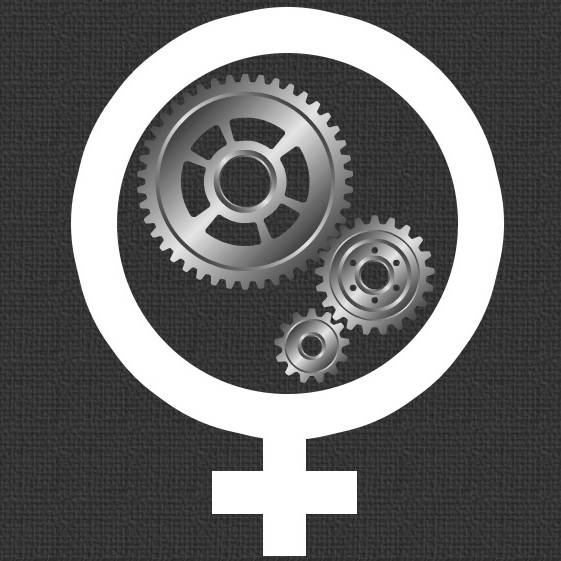Why don’t more women enter the male-dominated profession of engineering? Some observers have speculated it may be due to the difficulties of balancing a demanding career with family life. Others have suggested that women may not rate their own technical skills highly enough.
However, a recent paper co-authored by MIT social scientist Susan Silbey, based on a four-year study of female engineering students, offers a different story. Contrary to the stereotype, the study finds, women are no more hesitant than men when it comes to mixing family and work. Moreover, their self-assessments of their math skills do not predict whether they will stick with engineering. Instead, the study finds, women feel less comfortable in engineering than men, and lack the “professional role confidence” that male engineers seem to acquire easily.

“The further they get from the classroom, the more women don’t like the experience,” says Silbey, the Leon and Anne Goldberg Professor of Humanities and professor of sociology and anthropology at MIT. “They find there is too large a gap between the idea of being an engineer and the practice of it.” Women who have internships or jobs, she explains, find they “are too often relegated to ‘female’ roles of note-taker, organizer or manager,” and “don’t think they want to do this kind of work.”
Willing to balance family and work
In the study, a team of researchers tracked the progress of 720 students — more than 300 of them in engineering programs — between 2003 and 2007 at four institutions in Massachusetts: MIT, the Franklin W. Olin College of Engineering, Smith College and the University of Massachusetts at Amherst. The team gathered information about the students’ performance and experiences in the engineering profession from surveys, student diaries, interviews with faculty and administrators, and classroom visits.
The results are detailed in a paper, “Professional Role Confidence and Gendered Persistence in Engineering,” published recently in the American Sociological Review.
The researchers found that women in the engineering programs were twice as likely as men to switch to other science, technology, engineering and math (STEM) majors, and that men report higher levels of “intentional persistence,” meaning they are more inclined to picture themselves as engineers five years in the future. The women and men in the study earned similar grades, and the study controlled for classroom achievement, meaning the data shows divergent decisions made by students of similar caliber. And while the men did express more confidence in their math skills, self-confidence about technical skills did not correspond strongly to the career decisions of women.
Surprisingly, the men in the study were seemingly more daunted than the women by the prospect of balancing family commitments with careers. “The women who voiced stronger intention to have families were more likely to stay [in engineering], and the men who voiced stronger intention to have families were more likely to leave,” Silbey says. “We do not have an explanation yet for that, but it’s a fact that needs to be explored.”
The critical factor shaping the decisions of women, however, was their perception of the engineering workplace. Some women in the study arrived at this view through bad experiences in engineering internships. As one student at the University of Massachusetts told the researchers: “The people whom I work with don’t take me seriously. Not everyone does this, but a fair amount of the older men in my working environment do this. They’ll treat me like I know nothing and I’m only working … because my dad works there. What they don’t know is that I have a 3.7 GPA and am practically acing all of my engineering classes.”
As a result, the paper notes, many women find it difficult to “bear the burden of proving to others that, despite gendered expectations, they are skilled engineers,” and seek other professional disciplines.
Silbey’s co-authors on the paper are Erin Cech, a postdoctoral scholar at Stanford University and the lead author of the paper; Brian Rubineau ’93, PhD ’07, a professor of organizational behavior at Cornell University; and Caroll Seron, a sociologist at the University of California at Irvine. The study became part of the independent doctoral research of Cech and Rubineau. It was conducted with the assistance of the MIT and Cornell survey units, and supported by the National Science Foundation.
Series of studies underway
To be sure, problems of gender integration in the workplace are hardly limited to engineering. However, as Silbey notes, many other white-collar professions that have been historically male-dominated in the past, such as law, have seen greater shifts in terms of gender representation.
Silbey suggests that this particular contrast may have occurred because the legal profession more easily accommodates competing intellectual perspectives; or as she says, the law is “a basically pluralist, heterogeneous environment that is tolerant of variation,” at least in comparison to engineering. That characteristic may have made it easier for a critical mass of women to enter law in the 1960s and 1970s.
However, as the authors state in the paper, they “hope others will continue this research with larger samples and extend it to other professions,” to draw a more complete picture of how “professional role confidence” affects career choices.
Advocates for women in the engineering workplace say the study sheds light on a phenomenon that will require continued analysis. “We owe a debt to the authors for their research into a little-understood persistence from credential acquisition to career practice,” says Betty Shanahan, executive director and CEO of the Society of Women Engineers, a nonprofit group in Chicago. Shanahan adds, “Their insight and hopefully subsequent research can offer academic institutions, professional societies, and the engineering profession with interventions to increase the persistence of qualified women — and men — into engineering careers.”
Silbey and the co-authors of this paper are themselves engaged in multiple follow-up projects — partly using additional data from their survey of undergraduates — to pursue these and other questions. One paper they are working on directly compares the legal and engineering professions; another looks at relative salary differences in engineering in other fields.






